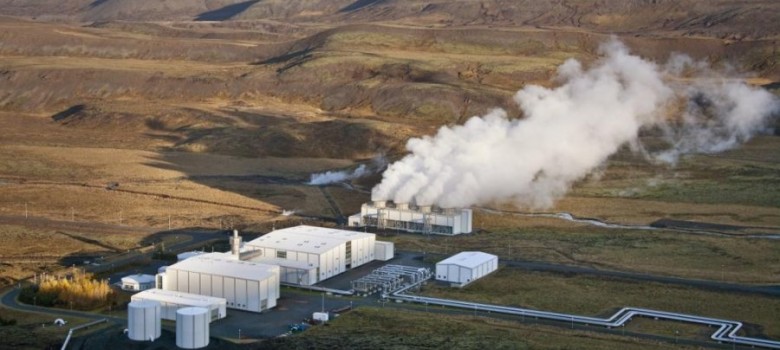
Geothermal Power – Iceland
You don’t have to back far in time, in fact only back to spring 2010, to remember how Icelandic geothermal activity impacted the UK and north-western Europe. Volcanic activity on the island caused ash clouds to build over the UK and grounded the majority of flights coming in and out of the continent. Although this wasn’t a comfortable experience, in the UK we can learn much about Iceland harnessing this natural energy source into geothermal power to create both electricity and district heating solutions.
The History of Iceland Harnessing Geothermal Power
For centuries, the people of Iceland have been using hot springs for washing and cleaning, however it was not until 1907, when a farmer from the west of Iceland used a concrete pipe to direct steam from a hot spring into his house, taking advantage of this naturally occurring product for heating. Since then, Iceland has been taking ever increasing advantage of it’s unique geology. It has even got to the point where in the capital Reykjavik, the pavements are heated.
What Makes Iceland So Unique to Exploit Geothermal Power?
Well it lies directly over the mid-Atlantic ridge, which is essentially the crack in the Earth’s crust where the Eurasian Plate and the North American Plate diverge from one another. As such Iceland is an area of extreme tectonic activity, with regular occurrences of both volcanic and seismic activity.
In the volcanic region of the island, there are 200 active volcanoes, so essentially Iceland can be considered as one super volcano, formed over millions of years from molten rock bubbling up from the seabed; as a result, the earth is particularly porous.
Iceland also has abundant precipitation, which as it falls gets absorbed by the sponge like earth. Since the Earth’s crust is relatively thin, magma chambers are positioned relatively close to the surface, which heats this water. There are approximately 20 high-temperature areas within the volcanic area of Iceland, where underground temperatures reach 250°C at a depth of only 1,000m.
This combination of factors makes Iceland the ideal place for geothermal power, with approximately 66% of primary energy coming from this source (both heating and electricity). In 2008, close to 90% of the country’s heating came from hydrothermal sources.
Geothermal Power Station Examples in Iceland
There are currently 9 geothermal power plants in Iceland, providing in excess of 5000 GWh of electricity per year, the largest being the 303MW Hellisheidi power station, operated by a utility company owned by the capital city of Reykjavik.
This geothermal power plant is a flash steam, combined heat and power (CHP cogeneration) plant power station, which besides producing electricity, provides hot spring water to the city, via a 20km pipe, which is used for heating. This plant consists of 50 boreholes varying in depth between 1000m and 2200m to get access to the hot steam fields. The two other large CHP plants are the Reykjanes plant (100MW) and Nesjavellir plant (120MW).
It is important to note that while only 30% of total electricity demand is met via geothermal power, the country provides the rest of its power using hydroelectric so is operating on a 100% renewable basis. In addition only a very small proportion of both its hydroelectric and geothermal power potential is currently been tapped into, so as the country continues to grow it will easily be able to maintain this 100% renewable position.
Applying Icelandic Geothermal Expertise to the UK
The UK has by comparison a very low percentage of clean, renewable energy being satisfied by geothermal power, with majority coming from wind farms or hydroelectric. To do more to exploit this geothermal energy source, on 30th May 2012, a Memorandum of Understanding was signed between the UK and Iceland that will see the two countries look at developing the deep geothermal sector in the UK. This initiative is set to explore whether an electricity cable can be laid between the two countries allowing Iceland to export it’s electricity, helping the UK hit its green energy targets.












No Comments yet! Be the first one.